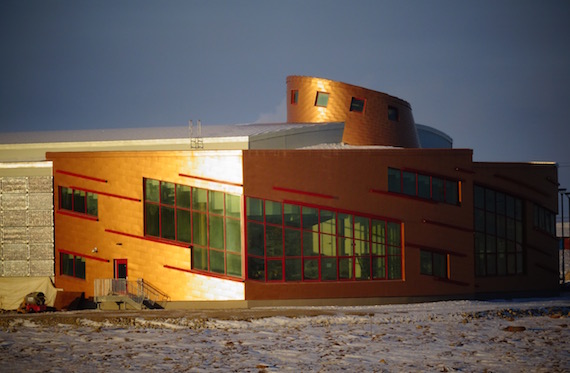Researchers seek Inuit knowledge to understand Kivalliq snow goose boom

A new study plans to tap Inuit traditional knowledge to help understand why snow goose numbers have dramatically boomed near Coral Harbour and Arviat over the last 50 years.
It’s one of 41 studies funded by Polar Knowledge Canada, the federal agency that oversees Cambridge Bay’s new Canadian High Arctic Research Station.
The project aims to better understand the effects of these geese on the land, other wildlife and people, and to produce new management strategies and improve the way goose population issues are addressed.
It involves researchers from the University of Ottawa, the hunters and trappers organizations in Coral Harbour and Arviat, and the Irniurviit Area Co-Management Committee, which manages the East Bay and Harry Gibbons Migratory Bird Sanctuaries.
While scientists have studied the impacts that geese have on the land and other animals, little has been documented on what Inuit Qaujimajatuqangit has to say on these subjects.
The research project will be overseen by the $200 million CHARS in Cambridge Bay, although the facility hasn’t officially opened yet. That’s expected to take place during the Kitikmeot Trade show in February, which Prince Charles and other as-yet-unconfirmed VIPs are expected to attend.
The money for various science studies, flowing from CHARS and Polar Knowledge Canada, was announced Dec. 15 by Carolyn Bennett, the minister of Crown-Indigenous relations and northern affairs: 41 projects will receive about $8.1 million between 2017 and 2019.
“Through these projects, Polar Knowledge Canada is helping to develop and leverage new knowledge and capacity that supports responsible, informed development in the rapidly changing North,” Bennett said in a news release.
In addition to its role in CHARS, Polar Knowledge Canada’s mandate includes “advancing Canada’s knowledge of the Arctic, strengthening Canadian leadership in polar science and technology, and promoting the development and distribution of knowledge of other circumpolar regions, including Antarctica,” the news release said.
Thirty-one of the projects funded under the northern science and technology program will contribute to these goals, the release said.
Eleven of these projects, including the one that focuses on geese in the Kivalliq, will look at ways to improve “economic opportunities, environmental stewardship, and the quality of life” of northerners and other Canadians.
These projects also include studies that look at the re-use and treatment of greywater in northern buildings and efforts to reduce the use of diesel fuel.
Other projects will look at non-invasive wolverine monitoring, caribou and muskox health, food security and sustainable fishery development in Gjoa Haven.
Like the project on the geese, not all Polar Knowledge-funded projects will take place in western Nunavut. One study plans to look at environmental risk mitigation, metal waste reduction and community training in Cape Dorset.